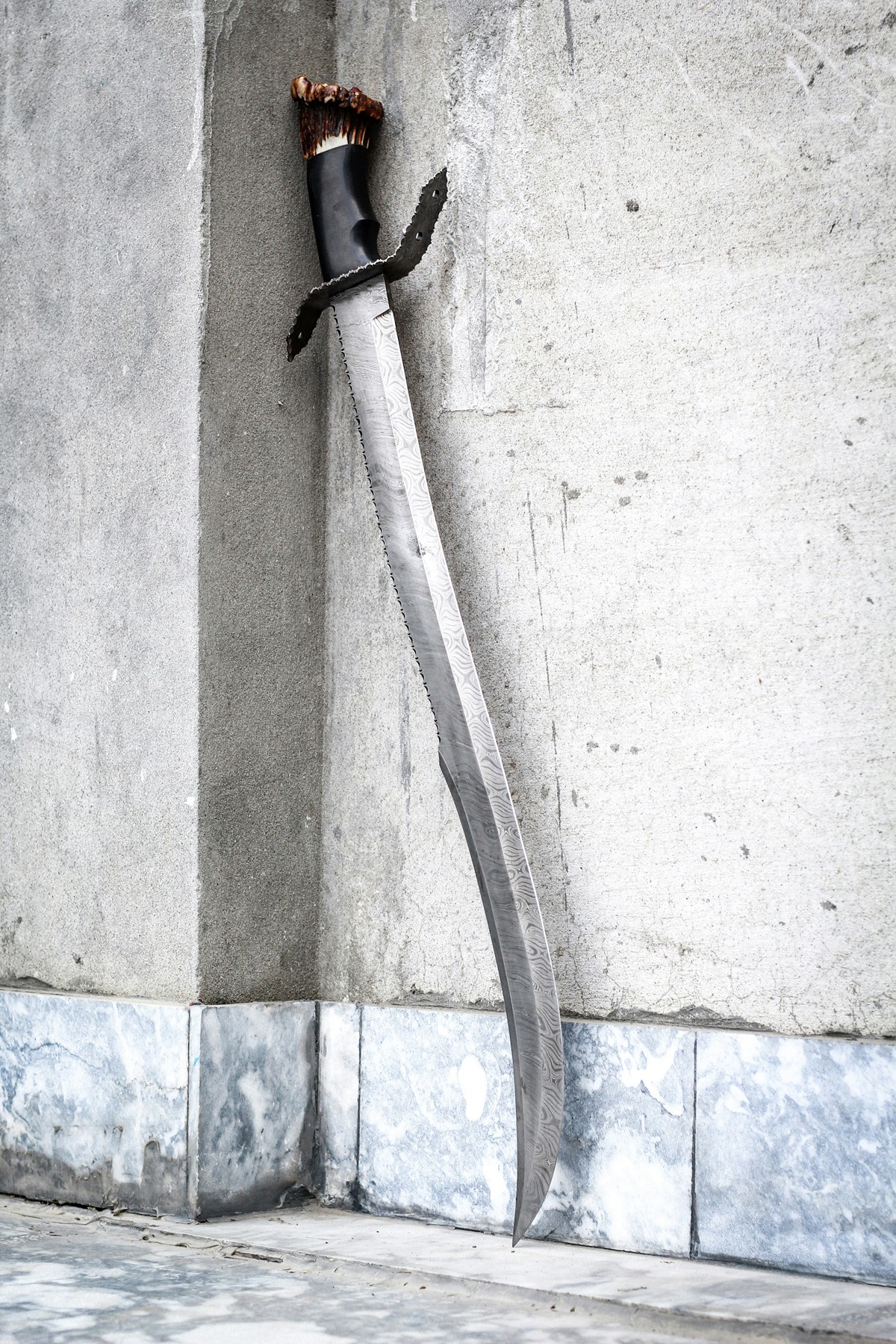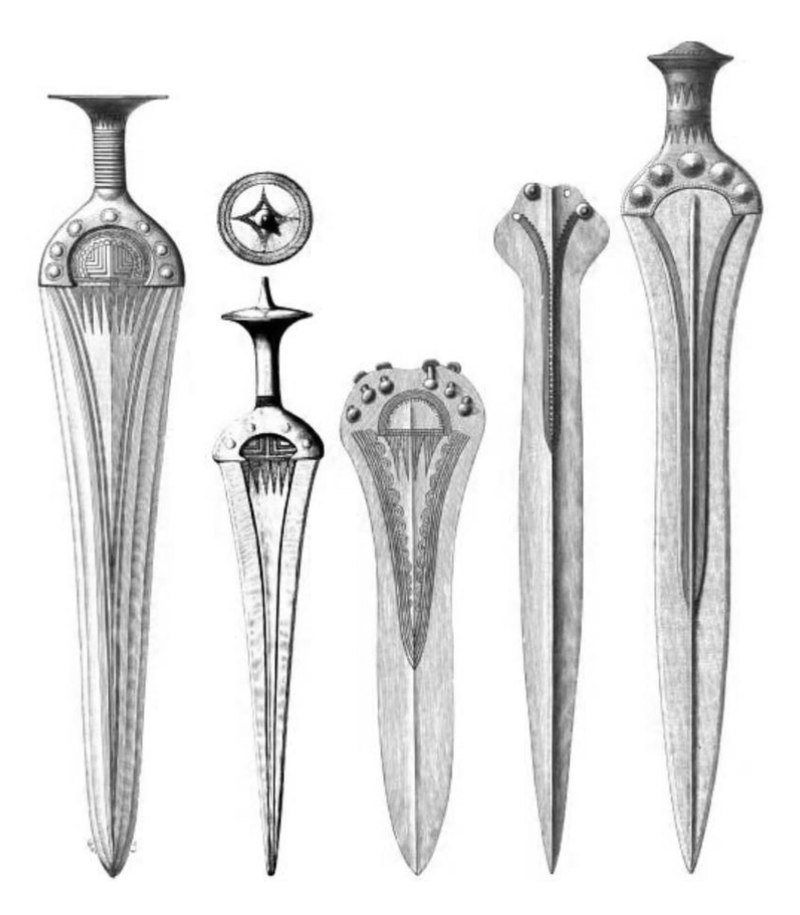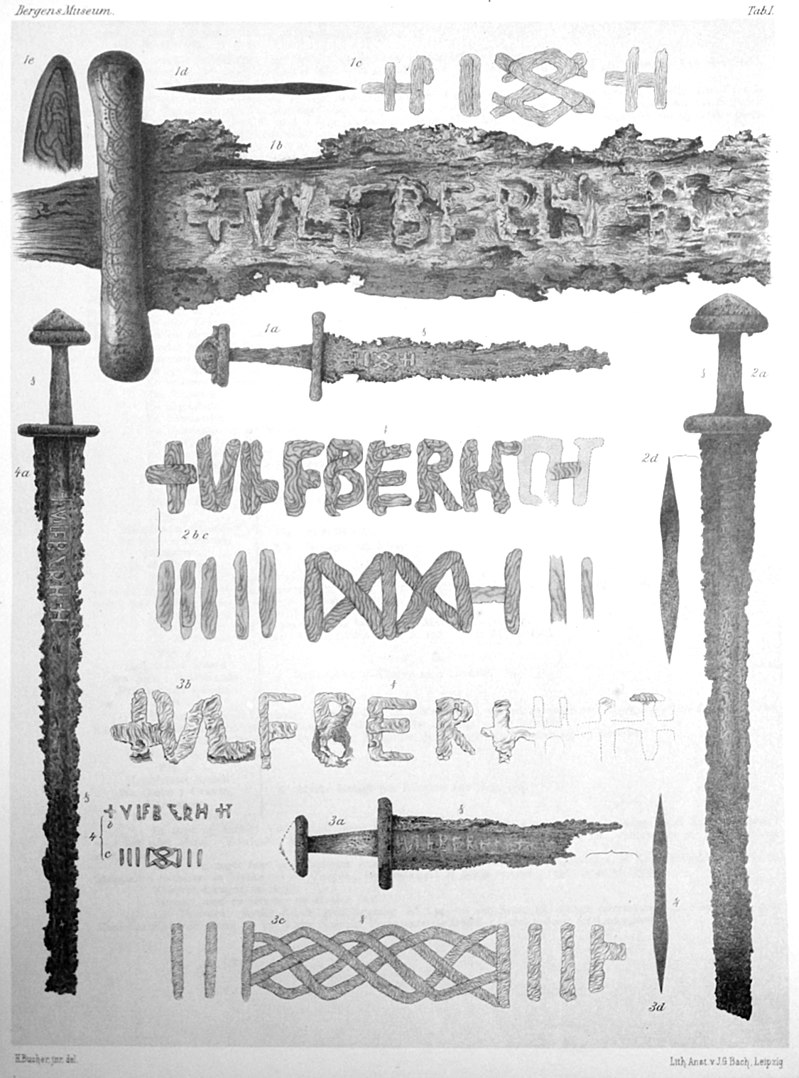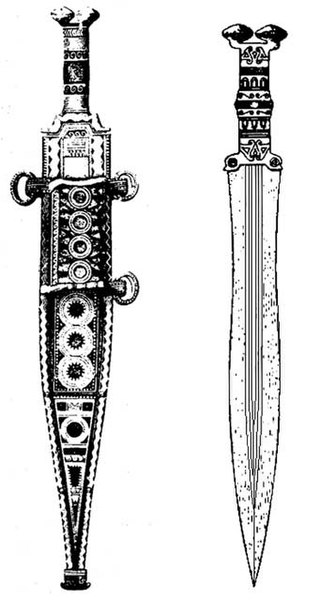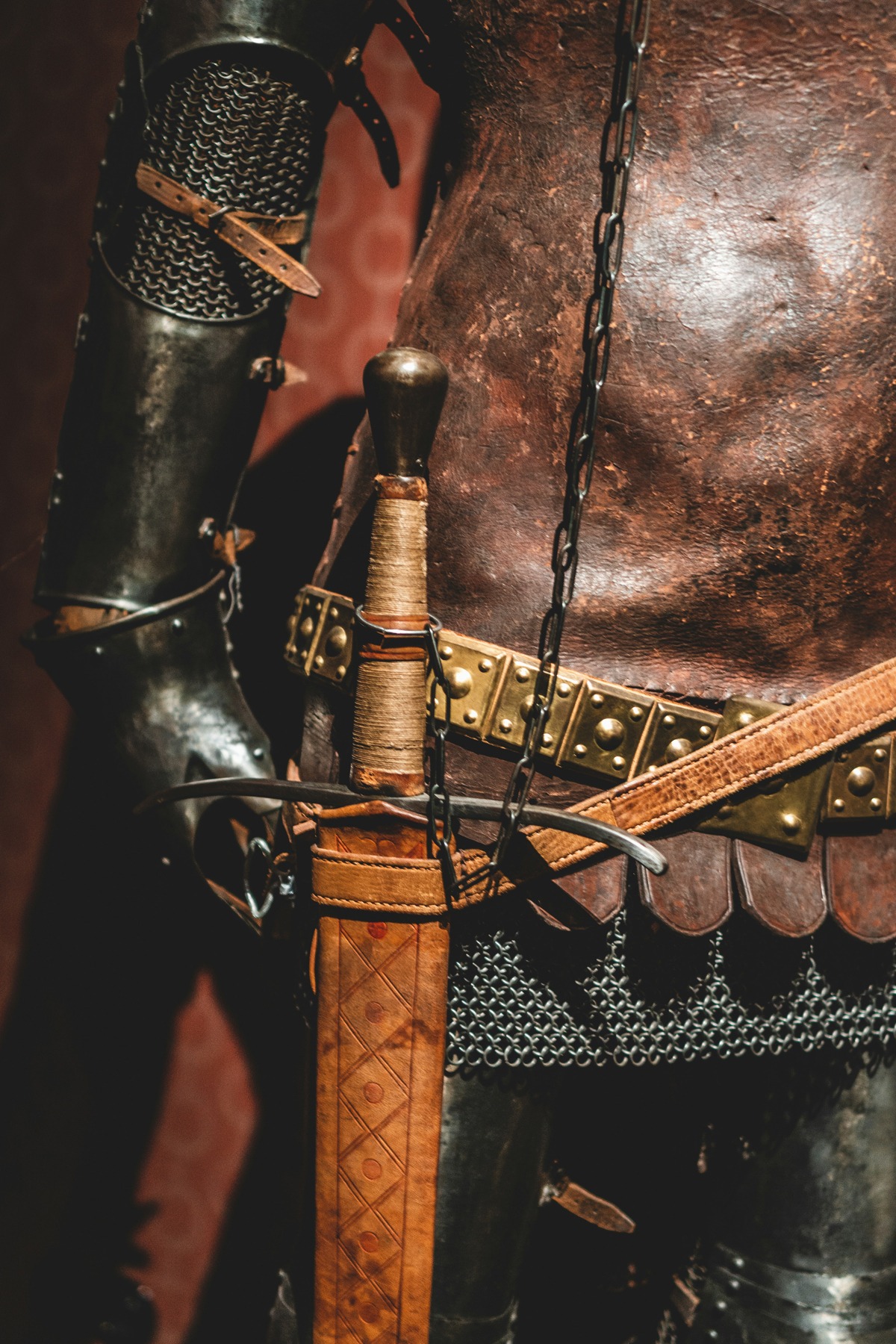Swords have been more than just weapons throughout human history. They symbolize power, justice, and valor across different cultures and eras. The discovery of ancient swords fascinates historians and archaeologists alike, offering a glimpse into the technological innovations and societal structures of early civilizations. This post delves into the stories of the oldest swords ever discovered, shedding light on their origins, the people who crafted them, and their impact on human history.
Determining the age and significance of these ancient blades involves meticulous examination and dating techniques, such as carbon dating and analysis of metallurgical compositions. These methods help researchers unlock the mysteries of the past, revealing how our ancestors mastered metalwork and used these weapons not just in battle but also as symbols of status and power.
Studying ancient swords is not merely about cataloging old artifacts. It’s a journey into understanding the ingenuity of early humans, their societal norms, and how they interacted with the world around them. By exploring the oldest swords ever found, we embark on a fascinating exploration of human history, craftsmanship, and the evolution of warfare technology.
The Oldest Swords Ever Discovered
The Gebel el-Arak Knife
The Gebel el-Arak Knife is not a sword in the traditional sense, but its significance in the evolution of bladed weapons earns it a place on this list. Discovered in 1914, this artifact dates back to around 3300 BCE, making it one of the earliest examples of sophisticated blade craftsmanship. The knife features a meticulously carved handle and a flint blade, indicating a high level of skill in early Egyptian craftsmanship. The handle depicts intricate scenes of battles and hunting, showcasing an early representation of Egyptian society and mythology.
The Gebel el-Arak Knife holds profound historical significance, bridging the gap between utility and artistry in ancient weapons. The detailed carvings on its handle are among the earliest artistic depictions of Egyptian cultural themes, predating the Dynastic period. These images provide invaluable insights into the military and ceremonial practices of prehistoric Egypt, suggesting a complex society capable of both war and sophisticated artistic expression.
Today, the Gebel el-Arak Knife is housed in the Louvre Museum in Paris, France. It continues to be a subject of study for historians and archaeologists, offering clues into the technological advancements and societal structures of ancient Egypt.
The Arslantepe Swords
Unearthed at the archaeological site of Arslantepe in Eastern Turkey, the Arslantepe Swords date back to approximately 3300 BCE. These swords are among the earliest examples of metal weapons in human history, marking a significant leap in warfare technology. Made of arsenical bronze, these swords feature long blades and intricate hilts, showcasing an advanced level of craftsmanship and understanding of metalwork for their time.
The discovery of the Arslantepe Swords was groundbreaking, revealing the sophistication of societies in the Early Bronze Age. These weapons are not just tools of war but symbols of power and authority. Their existence suggests that the society which crafted them had a well-established social hierarchy and was engaged in conflicts that required advanced weaponry. The swords from Arslantepe are a testament to the ingenuity of ancient metallurgists and the complexity of prehistoric societies in what is now modern-day Turkey.
Today, the Arslantepe Swords are preserved and displayed at the Malatya Museum in Turkey. They attract scholars and enthusiasts alike, who are eager to learn about the dawn of metal weaponry and the societies that produced them.
Mycenaean Bronze Swords
The Mycenaean Bronze Swords, dating back to approximately 1600 BCE, were discovered across various Mycenaean sites in Greece, including grave circles in Mycenae itself. These swords are characterized by their length, shape, and the intricacy of their design, which includes a variety of types such as the Naue II type. Crafted from bronze, these weapons highlight the Mycenaeans’ advanced metallurgical skills and their capacity for creating tools and weapons that were both functional and aesthetically pleasing.
The Mycenaean civilization is renowned for its contributions to Greek culture, architecture, and mythology. The bronze swords from this era not only exemplify the technological advancements in metalworking but also the militaristic nature of Mycenaean society. These weapons were instrumental in the Mycenaeans’ military ventures, including their interactions with other civilizations around the Mediterranean. The swords also signify the status and power of their bearers, often buried with them as grave goods, indicating the social hierarchy and the importance of warriors within their society.
Many of the Mycenaean Bronze Swords are housed in the National Archaeological Museum in Athens, Greece. These artifacts are part of a larger collection that showcases the richness of Mycenaean culture and its impact on later Greek civilizations.
The Sword of Goujian
The Sword of Goujian was unearthed in 1965 during an archaeological excavation in Hubei Province, China. Dating back to the Spring and Autumn period (approximately 771-403 BCE), this weapon is renowned for its remarkable state of preservation and the intricate details of its design. Made of bronze with high tin content, the sword features patterns of blue crystals and dark rhombi along its blade, and its hilt is bound with silk while the pommel is adorned with turquoise. The blade bears an inscription that attributes ownership to King Goujian of Yue, making it not only a weapon of war but also a personal artifact of significant historical importance.
The Sword of Goujian serves as a symbol of the power and prestige of its owner, King Goujian, who is known for his remarkable comeback from a period of captivity and humiliation to re-establish his state’s power and influence. This story resonates deeply in Chinese culture, symbolizing resilience, perseverance, and the importance of strategic patience. The sword’s exceptional craftsmanship reflects the advanced metallurgical techniques of the time, including the ability to create a weapon that remains untarnished and sharp over millennia.
Today, the Sword of Goujian is housed in the Hubei Provincial Museum, where it stands as a highlight of the collection. It attracts scholars and tourists alike, drawn to its story of ancient intrigue and the mystery of its preservation.
The Iron Swords of the Hittites
The Hittites, an ancient civilization that thrived in Anatolia (modern-day Turkey) around 1600-1178 BCE, were among the first to master the smelting of iron, leading to the development of iron swords. These weapons represented a significant technological leap forward from the bronze swords used by their contemporaries.
The advent of iron swords gave the Hittites a military advantage, allowing them to cut through the bronze armor of their enemies. This technological innovation is often credited with the Hittites’ success in expanding their empire, which at its peak included parts of the Middle East and Egypt. The iron swords symbolize the shift from the Bronze Age to the Iron Age, marking a turning point in military technology and warfare tactics.
Iron swords from the Hittite era have been found in various archaeological sites across Turkey and the Middle East. Many of these artifacts are now housed in museums around the world, including the Museum of Anatolian Civilizations in Ankara, Turkey, where they serve as a testament to the Hittites’ role in the early development of iron metallurgy.
The Viking Ulfberht Swords
The Ulfberht swords are a group of medieval swords found across Europe, dating from the 9th to the 11th century. These swords are renowned for their high-quality steel, far superior to that of other weapons of their time. The blades bear the inscription “+VLFBERH+T,” indicating their prestigious origin.
The Ulfberht swords represent the pinnacle of Viking-age weaponry and are believed to have been made in the Frankish Empire by skilled craftsmen. Their superior quality suggests a complex trade network and the exchange of knowledge and resources across Europe. The swords were likely owned by the most elite warriors, symbolizing status as well as martial prowess.
Ulfberht swords have been discovered across Scandinavia, Eastern Europe, and parts of Russia, reflecting the vast reach of the Vikings. Today, these swords can be found in various museums, including the National Museum of Denmark in Copenhagen, where they continue to intrigue scholars and enthusiasts with their mysterious origins and exceptional craftsmanship.
The Roman Gladius
The Roman Gladius is perhaps one of the most iconic swords in history, serving as the primary weapon of Roman legionaries. This short, double-edged sword was designed for stabbing and thrusting in close combat, perfectly suited to the Romans’ military tactics.
The Gladius was not just a weapon but a symbol of Rome’s military might and discipline. It played a crucial role in Rome’s expansion and the maintenance of its empire, making it an essential piece of military equipment for centuries. The design of the Gladius influenced sword development long after the fall of the Roman Empire.
Gladii have been found throughout the former Roman Empire, from the British Isles to North Africa. Many of these swords are now preserved in museums worldwide, such as the British Museum in London and the Roman-Germanic Museum in Cologne, Germany, offering a glimpse into the martial culture that dominated the ancient world.
Conclusion
These artifacts are much more than mere weapons of war. They are symbols of the technological innovation, artistry, and societal values of the civilizations that crafted them. From the early bronze masterpieces of the Mycenaeans and the meticulously crafted Sword of Goujian, to the iron innovations of the Hittites and the renowned Viking Ulfberht swords, each tells a unique story of human history.
These ancient swords offer us a glimpse into the past, revealing insights into the daily lives, military strategies, and social hierarchies of our ancestors. They underscore the universal human drive to innovate and improve upon the tools of survival and dominance. Furthermore, the stories of these swords—their creation, use, and discovery—highlight the interconnectedness of cultures and the flow of ideas and technologies across continents and ages.

